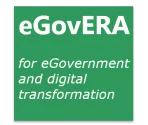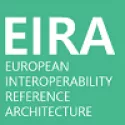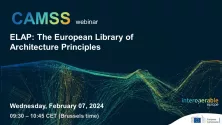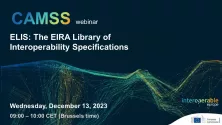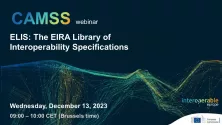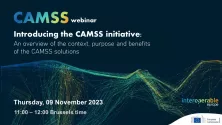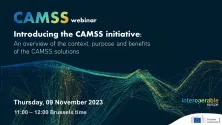New version of EIRA (6.0.0) is now available!
We are pleased to announce the latest release of EIRA (version 6.0.0) published on 31st May 2023.
Check out our latest releases by clicking on the icons below
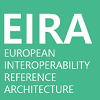
| 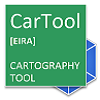
| 
| 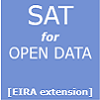
| 
| 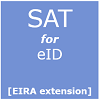
| 
|
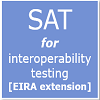
| 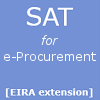
| 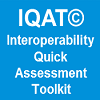
| 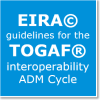
| 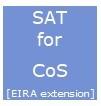
| 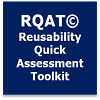
| 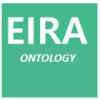
|
- The European Interoperability Architecture
- Expected benefits
- EIRA Support Series
- Continuous improvement
- EIRA© releases
- EIRA© Validator
- Solution Architecture Templates
- Cartography tool (CarTool©)
- The Interoperability Quick Assessment Toolkit
- The Reusability Quick Assessment Toolkit
- EIRA Ontology
- Supporting material
- Learning material
- Additional material
- EIRA© as an HTML repository
With the growing amount of information exchanges between public services (across borders and sectors), the need for interoperability in Europe is higher than ever. The ISA² Action 2016.32 (EIA) introduced a reference architecture to guide public administrations in their work to provide interoperable European public services to businesses and citizens that now is being maintained by the Digital Europe Programme (DEP).
The European Interoperability Architecture
The modernisation of public administrations, fostered by technological advancements, leads to a rapidly growing amount of information exchanges between public administrations (across borders and sectors). To facilitate these information exchanges, the need for interoperability in Europe is higher than ever. Solution developers in all domains of the public sector often deem interoperability and reusability essential to a solution design.
To attain interoperability, public administrations in Europe need to coordinate across borders and sectors when developing digital solutions to avoid the risk of creating new digital barriers for administrations, businesses, and citizens. They have the following needs:
- Need for a common terminology to design, assess, and communicate about e-Government solutions: public administrations need a common terminology to design, assess, communicate about, and find solutions building blocks (frameworks, tools, services) used to deliver interoperable digital public services;
- Need for a stable interfaces for digital public services: public administrations need to define stable interfaces between digital public services, so that others can rely on them to build new, aggregated digital public services;
- Need for an overview of already existing solution building blocks: public administrations need to be aware of already existing solution building blocks that have been developed by others.
The Digital Europe Programme (DEP) is providing concrete interoperability solutions that contribute to making the modernisation of public administrations a success story. It, among others, developed the European Interoperability Reference Architecture (EIRA©) to guide public administrations in their work to provide interoperable European public services to other public administrations, businesses and citizens.
The EIRA© is a four-view reference architecture for delivering interoperable digital public services across borders and sectors. It defines the required capabilities for promoting interoperability as a set of architecture building blocks (ABBs). The EIRA© has four main characteristics:
- Common terminology to achieve a minimum level of coordination: It provides a set of well-defined ABBs that provide a minimal common understanding of the most important building blocks needed to build interoperable public services.
- Reference architecture for delivering digital public services: It offers a framework to categorise (re)usable solution building blocks (SBBs) of an e-Government solution. It allows portfolio managers to rationalise, manage and document their portfolio of solutions.
- Technology- and product-neutral and a service-oriented architecture (SOA) style: The EIRA© adopts a service-oriented architecture style and promotes ArchiMate® as a modelling notation. In fact, the EIRA© ABBs can be seen as an extension of the model concepts in ArchiMate®.
- Alignment with EIF and TOGAF®: The EIRA© is aligned with the European Interoperability Framework (EIF) and complies with the context given in the European Interoperability Framework - Implementation Strategy (EIF-IS) . The views of the EIRA© correspond to the interoperability levels in the EIF: legal, organisational, semantic and technical interoperability. Within TOGAF® and the Enterprise Architecture Continuum, EIRA© focuses on the architecture continuum. It re-uses terminology and paradigms from TOGAF® such as architecture patterns, building blocks and views.
- Alignment with the Public Administration Architecture Framework (PAAF): the model is intended to be a starting point for developing an Enterprise Architecture for any Public Administration. This model is published by the Public Governance Institute of KU Leuven and it is aimed at modelling a complete Public Administration using an Enterprise Architecture Framework. The objective of the Quality Review of the Public Administration Architecture Framework (PAAF) is to analyse the potential alignment of PAAF and other models, such as EIRA, thus identifying useful guidelines and examples for mutual synergy.
The figure below shows the high-level overview of the EIRA©. Each view has a set of ABBs and relations pertaining to the legal, organisational, semantic and technical domain of an Interoperable European Architecture. Each view has entry - and exit points from one view to another.
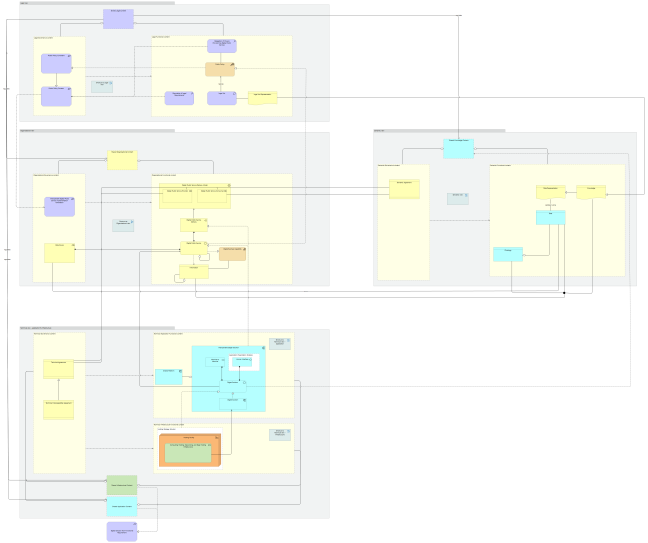
Expected benefits
The common use of the EIRA© when developing, assessing, and communicating about e-Government solutions will result in network effects, enhancing the coordination between public administrations at EU level and within the Member States. The common use of the EIRA will result in the following benefits:
- Development of more interoperable e-Government solutions: The consistent use of the EIRA© when developing e-Government solutions will make them more interoperable, for the following reasons:
- The EIRA© provides a common language of architecture building blocks for the design and comparison of the solution architectures of e-Government solutions;
- The EIRA© promotes the identification and use of common interoperability specifications, which hare to provide a basis for stable interfaces between digital public services;
- The EIRA© will contribute to an increased awareness and usage of EIF principles and recommendations.
- Increased application of the principles of service-oriented architecture (SOA).
- Cost-savings due to better assessment of solution portfolios: The EIRA© will contribute to realising cost-savings related to rationalisation of the portfolio of solutions and solution building blocks (e.g. phasing out superfluous SBBs; or making building blocks more generic to be more generally applicable.);
- Cost-savings via increased findability: the EIRA© provides a consistent way to document and classify reusable solution building blocks, allowing reusable and interoperable solution building blocks to be found and understood more easily.
EIRA© Support Series
- Guide: EIRA Online documentation
- Guide: EIRA guidelines for the TOGAF interoperability ADM cycle
- Guide: PAAF with EIRA and EIRA with PAAF Alignment Guidelines
Continuous improvement
As the EIRA© is being applied, new challenges and ideas for the EIRA© arise and need to be managed. Therefore the Digital Europe Programme welcomes feedback, additional thoughts, and open dialog on the idea of advancing the EIRA©. To facilitate this, the Digital Europe Programme set up an open change, configuration and release management process for the EIRA©.
Please follow this link to initiate a new discussion (registration and/or login is required).
Stakeholders working in the field of architecture and interoperability can also provide their comments on the new version of the EIRA (v6.0.0), through the dedicated page in GitHub.
EIRA© releases
The current EIRA© release is EIRA 6.0.0.
EIRA© Validator
This service allows users to validate ArchiMate® models against the EIRA©. The EIRA© Validator is implemented through the Interoperability TestBed, which is is a service offered by the European Commission’s DIGIT to facilitate the conformance testing of IT systems. More information on the Interoperability Test Be and its latest release is available in Joinup.
The EIRA© Validator is available here.
The set of Business Rules for EIRA and eGovERA can be found in the following links:
- EIRA: EIRA Validator Rules | Joinup (europa.eu)
- eGovERA: eGovERA Validator Rules | Joinup (europa.eu)
For questions and feedback please contact the EIRA© team at DIGIT-EIRA@ec.europa.eu.
Solution Architecture Templates
A Solution Architecture Template (SAT) is a specification extending the EIRA©. It provides support to solution architects in a specific solution domain. The SATs' purpose is to provide guidance by defining a minimal, but holistic (legal, organisational, semantic and technical) interoperability architecture to develop an interoperable solution.
The following documents are available to help the architect in documenting an SAT:
- Detailed-level Interoperability Requirements Solution Architecture Template (DL SAT) Design Guidelines - Guidelines on how to create a Detailed-level Solution Architecture Template
- High-level Interoperability Requirements Solution Architecture Template (HL SAT) Design Guidelines - guidelines for documenting the High-Level Interoperability Requirements for a solution using a Solution Architecture Template
- SAT Template - a word document that serves as a template for a new SAT
Eight DL SATs have been published to date:
- VAT scheme for SMEs v.1.0.1 - Enterprise and Solution architects can use the SAT model to finalize it and build their own national solution.
- Open Data SAT v1.0.1 Beta - Enterprise and Solution architects can use this document to design solution architectures in the domain of Open Data.
- eHI (Human Interface) SAT v1.0.1 - Enterprise and Solution architects can use this document and the related SAT model to design solution architectures that have a Human Interface (as opposed to a machine-to-machine interface) as part of the solution. The proposed solution architecture template is EC centric.
- eDelivery SAT v1.0.1 - Enterprise and Solution architects can use this document to design solution architectures in the domain of eDelivery.
- eID SAT v1.0.1 – Enterprise and Solution architects can use this document to design solution architectures in the domain of eID cross border authenticated service.
- Interoperability Testing SAT v1.0.0 - Enterprise and Solution architects can use this document when defining the architecture of their solution in order to introduce a platform to support interoperability and conformance testing. This assumes that the solution in question is required to foresee a well-defined means to enable such testing for its user community.
- e-Procurment - Enterprise and Solution architects can use this document to design solution architectures in the domain of e-Procurement.This SAT is to provides guidance by defining core legal, organisational, semantic and technical interoperability architecture in the domain of e-Procurement, and should allow businesses, citizens and public administrations to have a common understanding of the most-salient building blocks.
- CoS - Enterprise and Solution architects can use the SAT model to design solution architectures in the domain of Public Catalogue of Services.
Cartography tool
A major improvement is the introduction of the Cartography Tool (CarTool©).
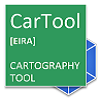
The CarTool© brings together high-level support for the EIRA© as an opens-source Archi® plug-in. It includes both editing features to model solutions using the EIRA©, and querying features to query an EIRA©-based Cartography of solutions. More information regarding the plugin as well as its version 6.0.0 have been published on Joinup.
The Interoperability Quick Assessment Toolkit

The objective of the Interoperability Quick Assessment Toolkit (IQAT©) is to allow Solution Owners to assess the Potential Interoperability of their software solutions supporting Public Services. The toolkit is fully compliant with all European Interoperability Framework (EIF) recommendations for the development and improvement of public services.
Based on the Interoperability Assessment Score, the IQAT© provides an estimated Interoperability maturity level for the software solution on which Solution Owners can activate technical improvements thereafter.
The IQAT© counts several expected benefits, such as:
- It spots areas for improving the interoperability in a given solution;
- It supports portfolio management decisions:
- by suggesting solutions that could be published in the European Interoperability Cartography (EIC);
- by clustering solutions with regard to interoperability Maturity;
- by identifying solutions that should be improved in term of interoperability.
- It is applicable to any software solution supporting public services (not only for TES);
- It saves time and resources in interoperability peer-to-peer tests by acting as a gateway to it. If the result of the Interoperability quick assessment is below the suggested threshold then it is recommended not to invest further efforts in a full interoperability peer-to-peer test;
It supports end users of the EIC in verifying the overall interoperability score of any published solution.
The Reusability Quick Assessment Toolkit

The objective of the Reusability Quick Assessment Toolkit (RQAT©) is to allow Solution Owners to assess the Potential Reusability of their software solutions supporting Public Services and it is based on explicitly differentiating between the reusability of Application Components and the consumption of Application Services.
Based on the automatically computed Reusability Assessment Score, the toolkit does not only provide a graphical radar chart but also a four stage reusability maturity level model for each of the aforementioned four reusability areas. It indicates the potential reusability maturity of a specific solution by providing a reference rate (from 0% to 100%).
Building on this maturity level of the specific solution, the Solution Owner can activate technical improvements aimed at increasing the potential reusability of the solution.
The expected benefits of the Reusability Quick Assessment Toolkit are the following:
- It spots areas for improving the reusability in a given solution
- It supports portfolio management decisions,
- by suggesting solutions that could be published in the European Interoperability Cartography (EIC)
- by clustering solutions with regard to Reusability Maturity
- by identifying solutions that should be improved in term of reusability
- It is applicable to any software solution (not only TES)
- It forms a first step before assessing the interoperability of an Application component/service.
- It supports end-users of the EIC in verifying the Overall Reusability score of any published solution.
EIRA Ontology
The EIRA ontology is the machine-readable knowledge representation of EIRA© including classes and axioms, which provide stakeholders of different backgrounds – including technical and business - with the capabilities to search, access and analyse the EIRA© concepts. An Ontology is a formal description of knowledge as a set of concepts within a domain and the axioms connecting concepts and allowing for logic inferences. An ontology is composed of the the terminological component (T-Box), assertions component (A-Box) and the rules for logic inference: the semantics.
EIRA Ontology release
The current EIRA© release is EIRA Ontology v1.0.0.
Supporting material
Presentation of the project by the European commission*
- Introduction of Stephen Quest (Director General of DG Informatics)
- Speech of Raùl Abril (ISA Programme Manager) (transcription)
- Speech of Marco Fichera (Lead Architect of the EIRA© - 2014)
- Presentation of the EIA© Action and the EIRA© layers and building blocks (slides)
*Please note that the video was produced for an alpha version of the EIRA. As such some building blocks might have been modified. The political view is no longer part of the EIRA.
Learning material
- Use-cases how to use EIRA© to fulfil the interoperability needs of an organisation.
- Selected architecture templates with descriptions, solutions and implementations.
- European Interoperability Academy Course introducing the main aspects, use cases and added value of using EIRA.
Additional material
- Archi** tool for designing ArchiMate models.
- Archimate® 3.2 Specifications is the official ArchiMate® reference.
- European Interoperability Framework (EIF)
- European Interoperability Framework - Implementation Strategy (EIF-IS)
- National Interoperability Framework Observatory (NIFO)
*ArchiMate® and TOGAF® are registered trademarks of The Open Group.
**Archi® is a registered trademark of Phillip Beauvoir.
EIRA© as an HTML repository
A web version of the EIRA v6.0.0 (Architecture Building Blocks, views, viewpoints, etc.) can be consulted here.
Pagination


